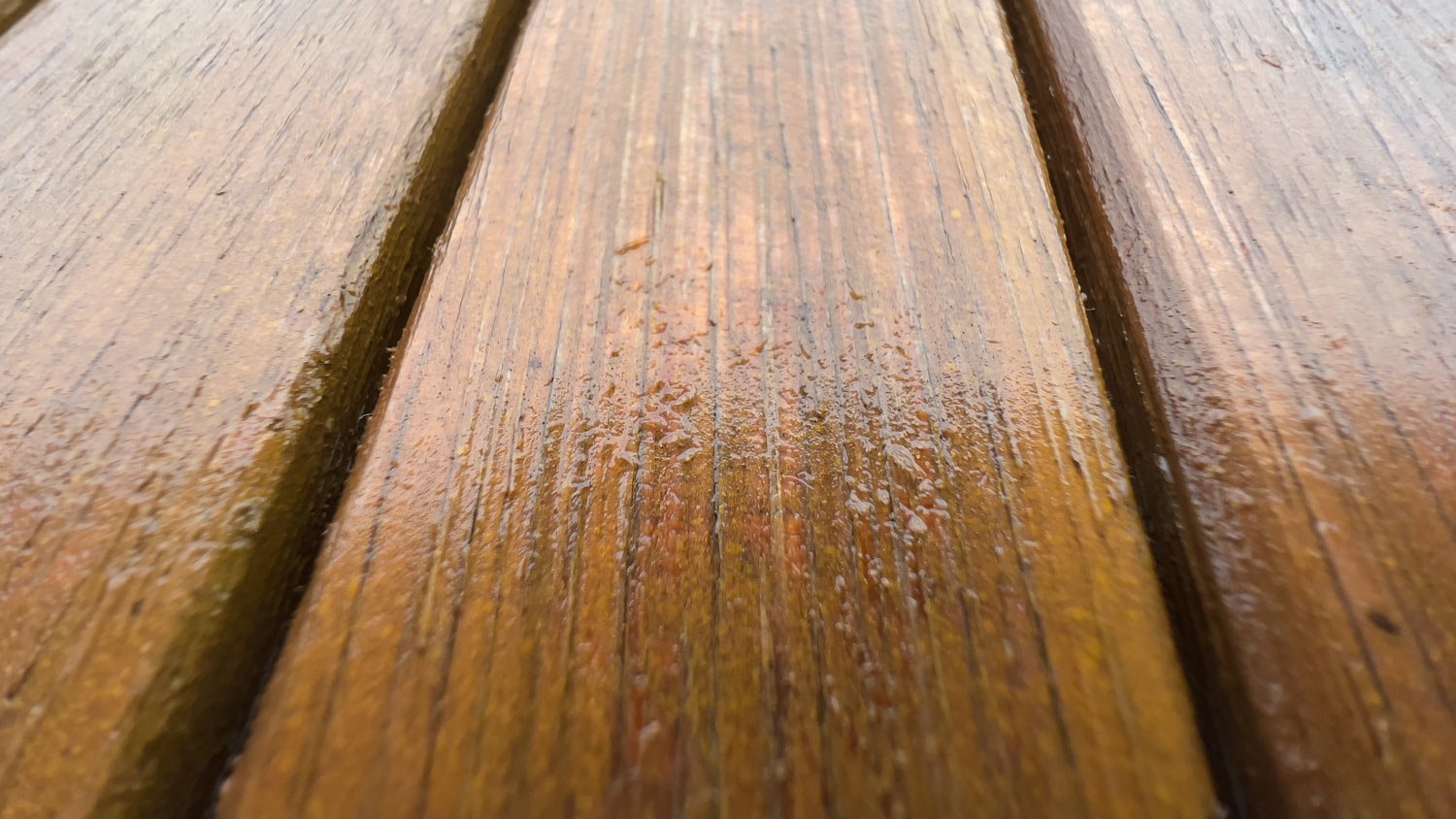
Sealing a deck is important for protecting it against the elements. Find out the cost to seal a deck, whether you DIY or hire a pro to do the job.
What to do when you’re dealing with peeling


Improper deck stain application is the most common issue leading to peeling.
Make sure you’re using a protective deck stain made for outdoor use.
Excessive exposure to water can cause peeling.
Sanding and reapplying in dry conditions is your best option to deal with peeling.
Staining your deck can be a major undertaking, depending on the size, so it’s always discouraging to see your hard work quickly undone. If you’re left wondering, “why is my deck stain peeling,” use this guide to determine the most likely underlying issue and get a fix in place that will leave you enjoying your outdoor space rather than pulling your hair out.
Deck stain is meant to soak into the wood and bind to the fibers, so if you apply too much stain, the excess will remain on top. Without a surface to bind to, the stain will quickly begin peeling away and leave you with a headache rather than a beautifully stained deck.
You can sand off the excess stain with a high-grit sandpaper, but you’ll likely have to reapply a thin coat of stain over the sanded wood to make sure the surface is protected.
Stain needs a bare wood surface to bind to, so if you don’t prep your deck properly before staining, you may not get good adhesion. You’ll need to sand off old stain and paint, clean off dirt and debris, and let the wood dry completely before staining for the best results.
Unfortunately, your best option is to sand off the peeling stain, prep the surface properly, and reapply the stain.

Wood stain includes pigments to color the wood, binders to protect it, and solvents to get it to soak into the wood before drying. If you apply deck stain in the wrong temperatures or humidity levels, the solvents can evaporate too quickly or too slowly and cause premature peeling. Always follow the manufacturer’s recommendations when it comes to application conditions.
Sand off the peeling stain with a low-grit sandpaper and then smooth the surface with a high-grit sandpaper. Then, reapply the stain in the proper conditions.
If you stained your deck right after installation, your peeling might be a result of the moisture that was still trapped inside the wood. “Green wood” has a high moisture content that can cause staining to go awry, just like high humidity or rain during application.
Avoid staining a brand-new deck for a year after installation. If you already did, sand off the finish, wait until your deck is a year old, and then reapply.
Decks see constant exposure to rain, snow, UV radiation, and foot traffic, so any wood stain you use needs to stand up to some serious abuse. Using a wood stain intended for indoor projects will very quickly peel regardless of your application technique.
Similarly, some wood species require specific types of wood stain for good bonding. For example, a wood with a high natural oil content, like teak or rosewood, may not take oil-based stain well.
Your best option is to sand off the wrong stain and reapply the right stain in good conditions. Consult with a deck staining company near you if you need help choosing a deck stain.
Finally, excessive moisture will cause deck stain to peel more rapidly. If you’re noticing a strip of peeling stain under your eaves, chances are the runoff from your roof is causing the issue.
First, install gutters to prevent future water damage. Next, sand down the damaged area and reapply your stain once the wood is completely dry.
Staining a deck is a labor-intensive project, but it’s something that most DIYers can tackle without too much hassle. However, if you’re constantly running into problems with your deck stain peeling, or you just don’t have the time or patience to get the job done yourself, don’t be afraid to call in a pro for the best results.
It’s also a good idea to call a professional to stain your deck if you have a more exotic species, like teak, mahogany, or rosewood. These species require special stains and application techniques to get the best appearance and longest-lasting results.
From average costs to expert advice, get all the answers you need to get your job done.

Sealing a deck is important for protecting it against the elements. Find out the cost to seal a deck, whether you DIY or hire a pro to do the job.

Left with a sticky mess instead of a beautifully stained wood project? Learn why your wood stain isn’t drying and how to fix the problem.

Finding maintenance-free decking that works for your home, budget, and lifestyle can be challenging. This guide lists the 7 best low-maintenance deck materials.

You can get even more years out of your cedar fence by giving it a little stain and TLC. Learn how to seal a cedar fence with this guide.

Cleaning your deck at least once a year boosts its durability and appearance. Learn how to clean decking, whether it's wood or composite.

If your load-bearing porch post is starting to rot and deteriorate, you may wonder who to hire to replace porch columns. Let’s explore the project.